Water pollution in Aotearoa
Water pollution in New Zealand is a growing problem. Two thirds of rivers are too polluted to swim in and once-safe drinking water is increasingly contaminated with harmful nitrate. We must protect fresh water.
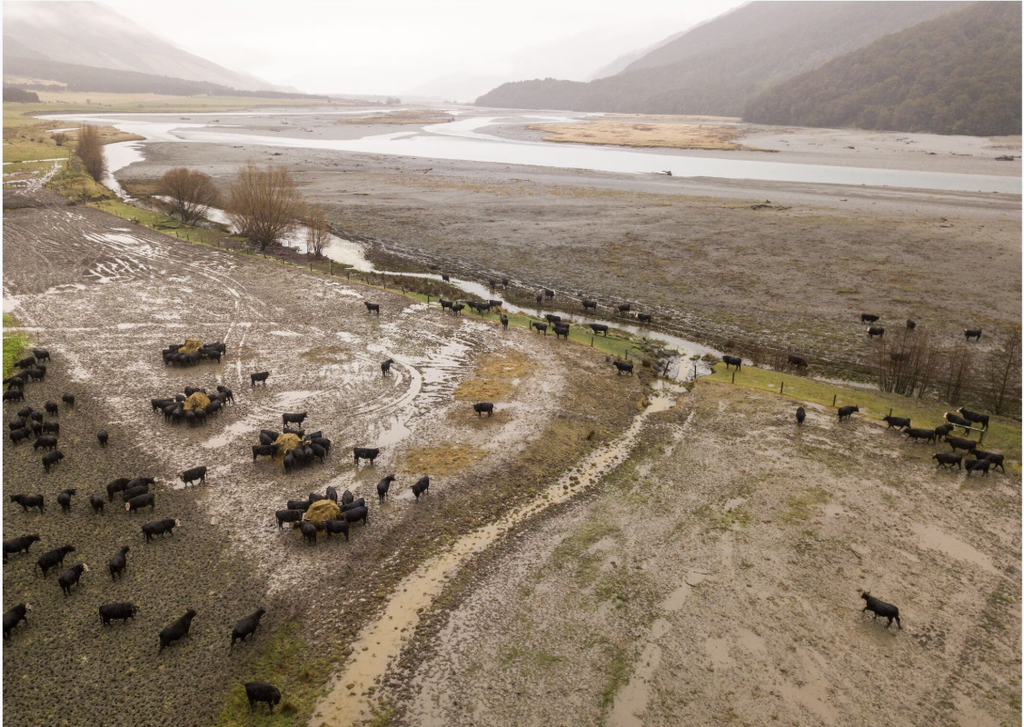
Why is the water in New Zealand so polluted?
Everyone in New Zealand should be able to safely drink the water coming out of the kitchen tap, or take a swim in lakes and rivers. But pollution from intensive dairy is putting fresh water at risk in two major ways:
- There are too many cows and too much synthetic nitrogen fertiliser being dumped onto pasture. This overuse of fertiliser, as well as concentrated patches of cow urine, result in nitrate leaching and runoff ending up in lakes, rivers, and the water table. From here, nitrate also ends up in drinking water.
- Irrigation is another big source of water pollution in Aotearoa. Big irrigation schemes suck water from rivers, and spray it onto farmland to grow more grass for cattle to eat. This means there is less water flowing through the rivers, which leads to a build-up of sediment downstream from water takes. It also means more dairying, which results in more water pollution.
Agriculture and water pollution
Ultimately, the main cause of freshwater pollution in Aotearoa is the intensive dairy industry. If we want clean, safe water and swimmable lakes and rivers, we must transition away from intensive dairying towards more plant based, ecological farming practices.
Intensive dairy is reliant on several inputs to sustain the sheer number of cows in the dairy herd. Not only do dairy cattle pollute fresh water, but these inputs like fertiliser and irrigation do too.
Synthetic nitrogen fertiliser is one of the worst – and it’s applied in huge quantities by intensive dairy farmers. Runoff from fertiliser and manure ends up in lakes and rivers, making them unsafe to swim due to algal blooms, E. coli and other pathogens. The nitrate from fertiliser also leaches through the ground and ends up in the water we drink – which can have significant health impacts.
What’s Greenpeace doing about water pollution?
Greenpeace is sounding the alarm on nitrate contamination in drinking water – a looming public health crisis.
We’ve released the Know your Nitrate map, which maps nitrate levels in drinking water across the country, and offer free water testing for nitrate contamination. It’s an essential service to people in rural communities on private bores, who would otherwise have to pay to get their water tested for pollution they didn’t cause.
To truly stop the pollution of fresh water, we need to tackle the source of the pollution.
That’s why we’re calling for a phase out of synthetic nitrogen fertiliser. The overuse of fertiliser is one of the biggest drivers of water pollution in Aotearoa.
And we’re standing up to resist plans to build new irrigation schemes. One of these is the Ruataniwha Dam which is now back on the table due to the Fast-Track Approvals Bill. There are also several planned irrigation schemes in Canterbury that will threaten the health of fresh water.
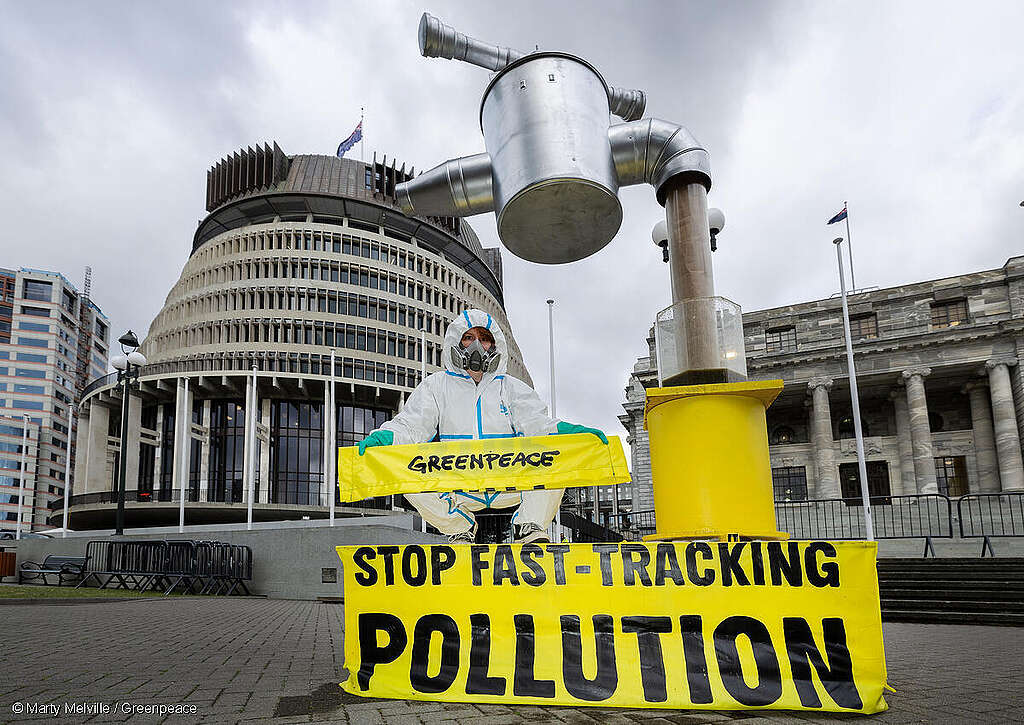
Join the campaign
It is only through collective action that we can protect freshwater. Use your voice, join us today.
-
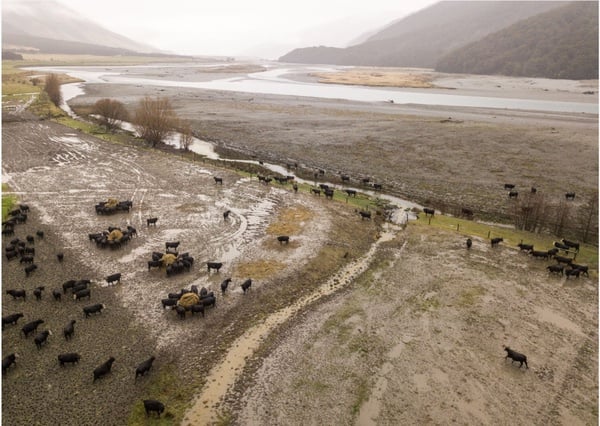
Tell Prime Minister Christopher Luxon to stop the rollback of freshwater protection
Every New Zealander should be able to swim in clean rivers and know that the water coming out of their kitchen tap is safe to drink.
-
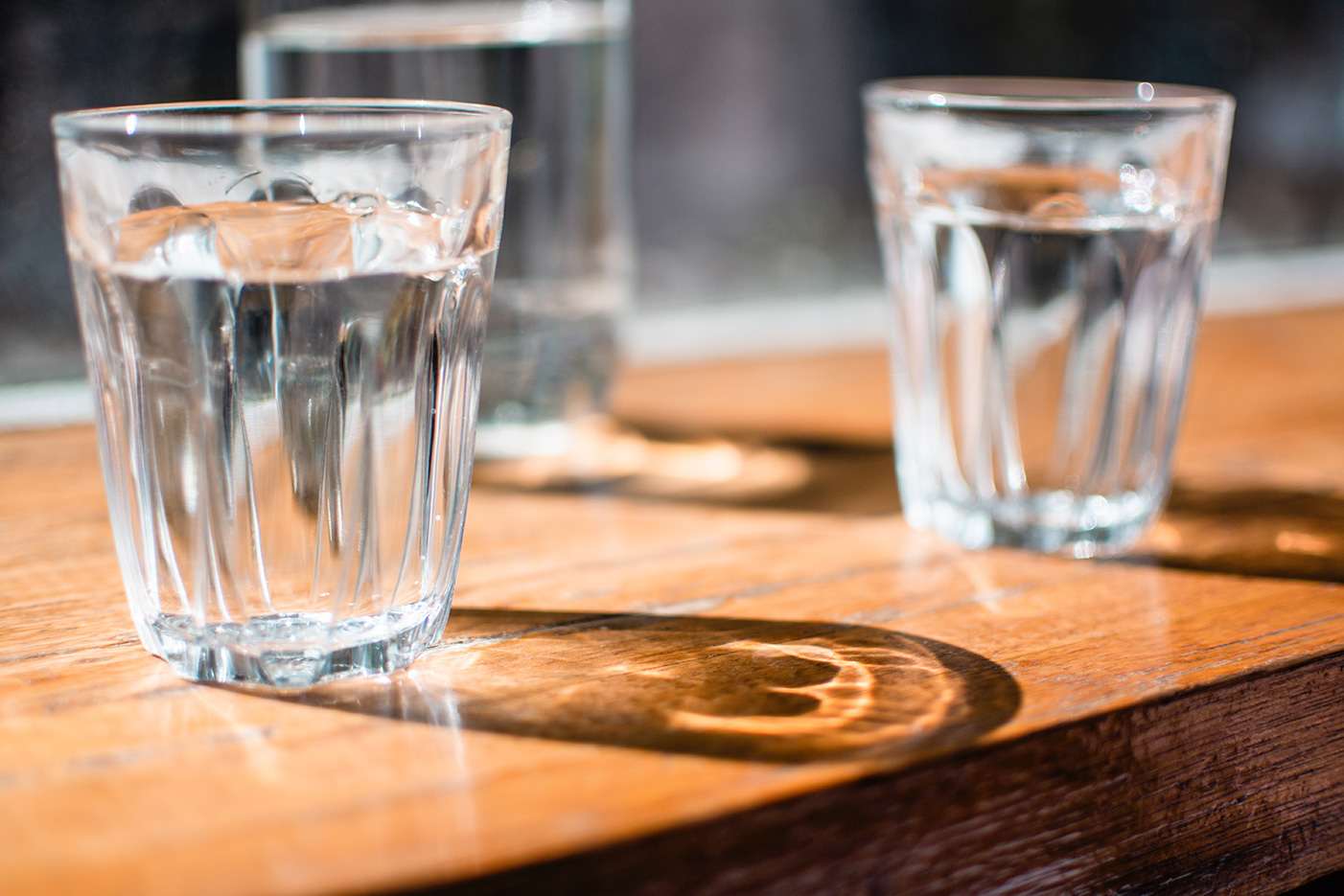
PETITION: Get nitrates out of our drinking water
Call on the Government to lower the limit for nitrates in drinking water to safe levels
-
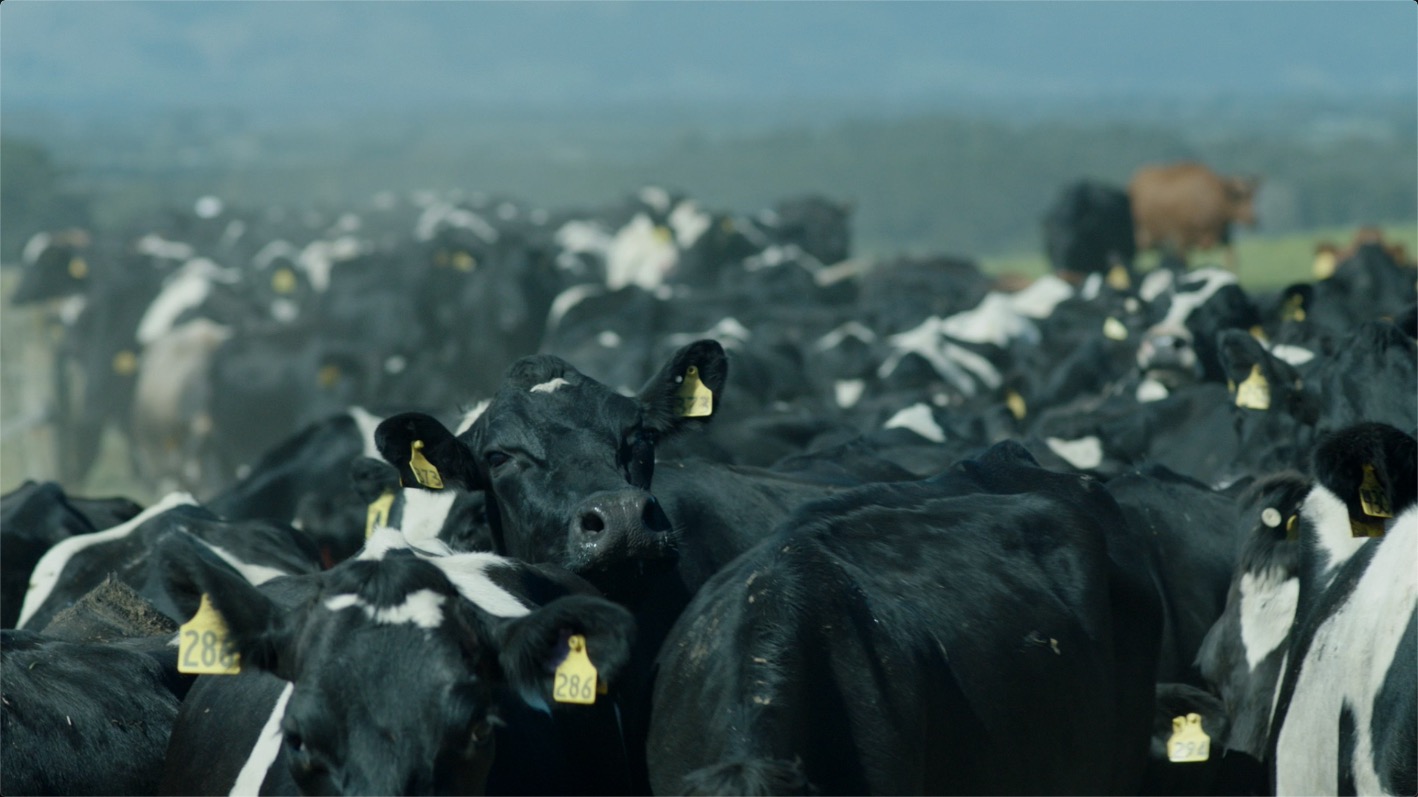
PETITION: Ban synthetic nitrogen fertiliser
Sign on now to call on the New Zealand Govt to ban chemical nitrogen fertiliser.
Free nitrate testing
Everyone should be able to trust that the water from their tap is safe to drink.
We’re offering free, mail-in water testing so you can check your water for nitrate contamination linked to bowel cancer and preterm birth and caused by synthetic nitrogen fertiliser and too many cows.
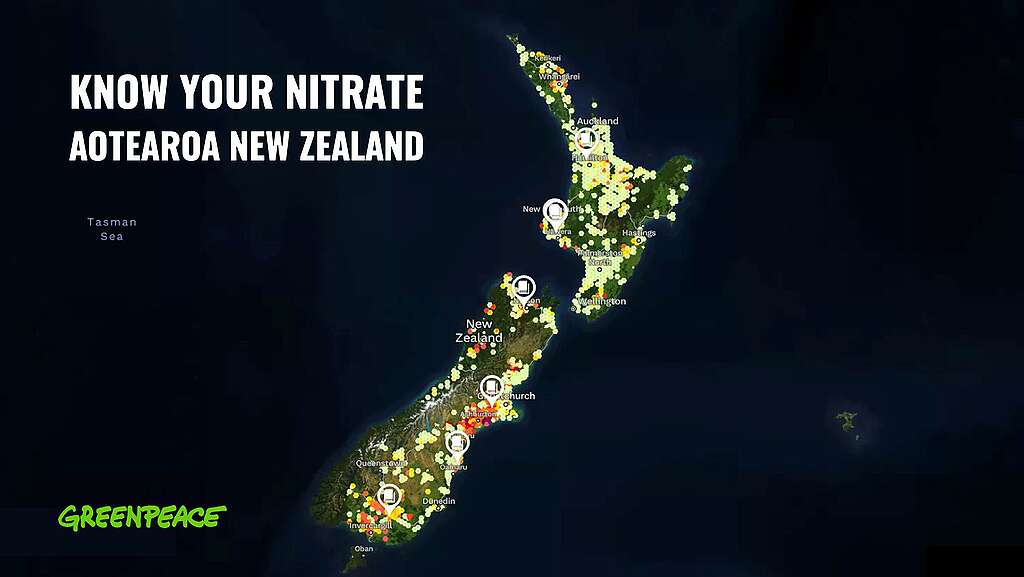
Why is the water in Canterbury so bad?
There are many different reasons why water pollution in Canterbury is so bad. Some reasons include:
- Farming in Canterbury has changed massively over the last 30 years. There’s been a huge expansion of dairying. Dairying is much more intensive and polluting than the sheep, beef, and crop farming that took place previously.
- Canterbury’s soil is not fit for dairy farming. The soil is largely stony and porous, like what you’d find in a riverbed. It’s called alluvial soil, and it’s really easy for water to pass through. Runoff from farming – like cow urine, or fertiliser mixed with irrigation water – soaks through this soil and into lakes, rivers, and drinking water.
- Canterbury’s dry climate means the industry uses heaps of irrigation and fertiliser to sustain huge cow herds- both of which make water pollution worse
All of these factors together mean Canterbury has some of the worst water pollution in New Zealand. And it’s going to get worse, unless we change things. Christchurch city’s water is also under threat, and unless we stop the pollution at source, it will become increasingly contaminated.
What is the Greenpeace Water Action Network?
The water action network is a collection of water advocacy groups based in Canterbury communities. It is made up of groups of local community members who come together to advocate for safe, healthy drinking water and swimmable rivers.
Greenpeace supports these groups with in-person and online training, monthly zoom calls to connect with others in Canterbury, advice on how to pressure local politicians, and resources to use for campaigning.
Currently, we are working to establish groups in each of the Environment Canterbury wards. We are also supporting the work of two local groups working to campaign against nitrate in drinking water in Darfield and Oxford. If you would like to join one of these groups, please let us know!
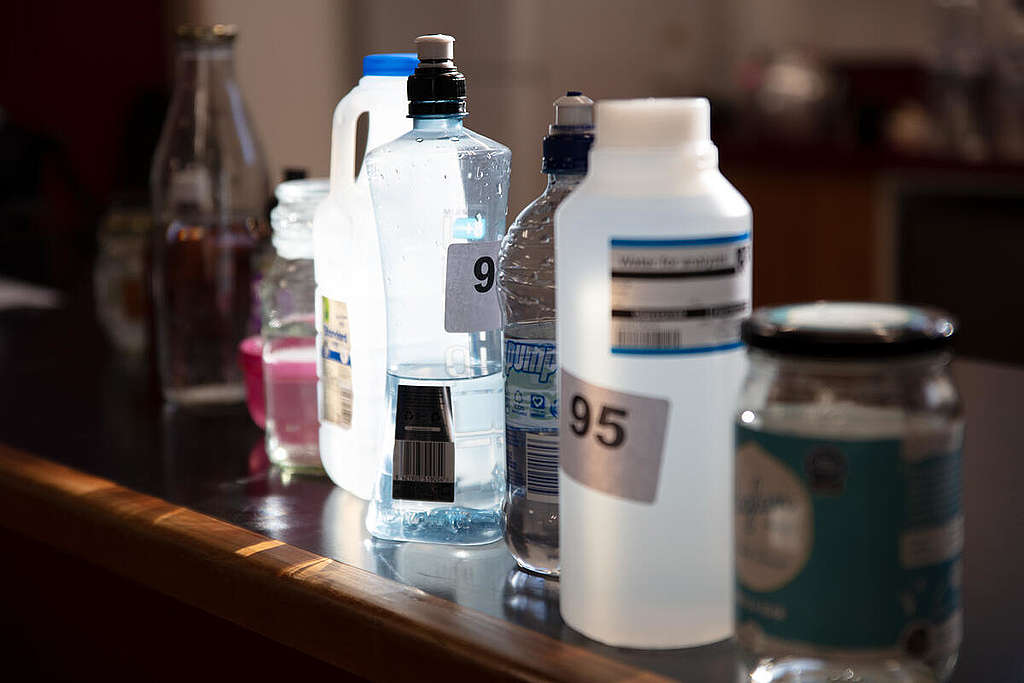
Your water questions, answered
Intensive dairying is the main cause of water pollution in New Zealand.
Over the past 30 years, Aotearoa’s dairy herd has nearly doubled. Some regions, like Canterbury, are seeing even more extreme increases in cow numbers. The combination of excessive cow numbers and a 693% surge in synthetic nitrogen fertiliser use has led to heightened climate emissions, polluted rivers, and increasingly contaminated drinking water.
The water pollution caused by intensive dairying is so bad that it takes a staggering 11,000 litres of water to dilute the pollution from just 1 litre of dairy milk produced in Canterbury. This is why increasingly, Canterbury’s water is becoming undrinkable, and its lakes and rivers are more and more unsafe for swimming.
This wasn’t an accident, and politicians of all political stripes are to blame. Regional councils set regional land and water plans and approve resource consents, and the Government sets national policy statements for freshwater management – both of which have been too permissive for decades, which has enabled dairy expansion and the subsequent degradation of lakes, rivers and drinking water.
Yes, drinking water is affected by pollution from the intensive dairy industry.
In New Zealand, up to 15% of people could be drinking water that is contaminated with potentially unsafe levels of nitrate. This number is even higher in rural communities. At the end of 2024, a shocking new report revealed that rural children are twice as likely as the average New Zealander to be exposed to dangerous levels of nitrate contamination in their school drinking water.
High levels of nitrate have been shown to increase risks of harm to human health, like increased risk of cancer and pregnancy complications.
Greenpeace’s Know Your Nitrate map outlines levels of nitrate pollution in drinking water across the country based on a combination of Greenpeace testing and local council testing. You can view the Know Your Nitrate map here.
Other contaminants like E. coli and campylobacter also threaten drinking water. In 2016, Hawke’s Bay experienced a devastating outbreak of the waterborne disease, campylobacteriosis, that resulted in many becoming seriously unwell. It is also believed to have contributed to four deaths. This was later found to have been caused by sheep effluent ending up in drinking water supply.
It is predicted that drinking water contamination as a result of the intensive dairy industry will get worse over the coming decades.
The impacts of water pollution on people can include:
1. High levels of nitrate can cause harm to human health, like increased risks of cancer and pregnancy complications.
New Zealand’s legal limit for nitrate in drinking water is set at 11.3 mg/L – there is a risk of infants developing Blue Baby Syndrome if they are fed formula that has been mixed with water at this level of nitrate contamination. However, recent studies have shown that there are increased risks to human health from exposure to nitrate at much lower levels – as low as 1 mg/L.
Studies have shown that up to 15% of New Zealanders could be drinking water with levels of nitrate contamination that could increase the risk of developing bowel cancer. And when nitrate levels reach 5 mg/L, the New Zealand College of Midwives has advised that pregnant women should consider seeking an alternative source of drinking water.
2. Polluted and unswimmable rivers mean that we can’t swim or fish in the waterways in our neighbourhoods.
The quality of New Zealand’s lakes and rivers has been in decline for many years. Several lakes in Canterbury are at risk of ‘flipping’ – of becoming so polluted that they cannot sustain plant and animal life. Of New Zealand’s many rivers, almost two thirds are degrading in quality. Every summer, we see more and more warnings of toxic algal blooms or unsafe levels of E.coli, meaning that it is unsafe to swim or fish in those rivers. This leads to people feeling increasingly disconnected from nature.
This is even more significant for tangata whenua, who have important ancestral and spiritual connections to freshwater lakes and rivers. For example, the Ōtūwharekai/Ashburton Lakes – an important seasonal mahinga kai area lying on the route between the east and west coasts – are at risk of flipping. The loss of mahinga kai like these lakes can result in tangata whenua experiencing a loss of connection to their whakapapa and cultural heritage.
Water pollution impacts on animals can include:
1. Eutrophication, where the water receives an excessive amount of nutrients, especially nitrogen and phosphorus, can lead to lakes and rivers no longer being able to support New Zealand’s native fish. That’s because their biological safe zone is very limited – if the amount of a certain nutrient in the water exceeds what they can tolerate, they will die. For example, New Zealand’s native fish can generally only tolerate a very low level of nitrate.
2. If the bugs and fish that live in and around the lakes and rivers die off, or can no longer tolerate the conditions, that impacts the birds that prey on these animals, and can lead to starvation. Lake Heron – so named for the kotuku or white heron that was once so common in the area – no longer sees the same high numbers of these birds, because there simply are not enough fish for them to live on.
3. Fish can suffocate as a result of large algal blooms. While many organisms cannot survive when there are excess amounts of nutrients such as nitrogen and phosphorus in the water, algal blooms thrive. When these algal blooms die off, oxygen is consumed in the process. This can create ‘dead zones’ where there is not enough oxygen, so the fish suffocate.
4. Irrigation schemes reduce the flow of water in rivers, which means that in the summer they often dry up, leaving fish to die.
Intensive dairying is a model of farming that crams as many cows as possible onto the land, in order to produce as much milk as possible. It uses significant amounts of inputs like synthetic nitrogen fertiliser, imported feed, and irrigation, to sustain these cattle, as the land cannot naturally sustain so many cows.
Intensive dairying is pushed onto New Zealand farmers by the intensive dairy industry. The intensive dairy industry is led by Fonterra, but includes all of the big corporations who profit off of the dairy sector in Aotearoa. It also includes big corporate mega-farms, which are often owned by overseas investors.
For more about our nitrate testing programme – including where our next water testing events will take place – click here.
You can get a free mail-in testing kit at any time here.
Check out our FAQs on nitrate contamination and nitrate testing results.
If you would like to speak to someone further about what your nitrate test result means, or if you would like to learn more about our work to ensure healthy drinking water for all and how you can be involved, please get in touch with us at [email protected]
-
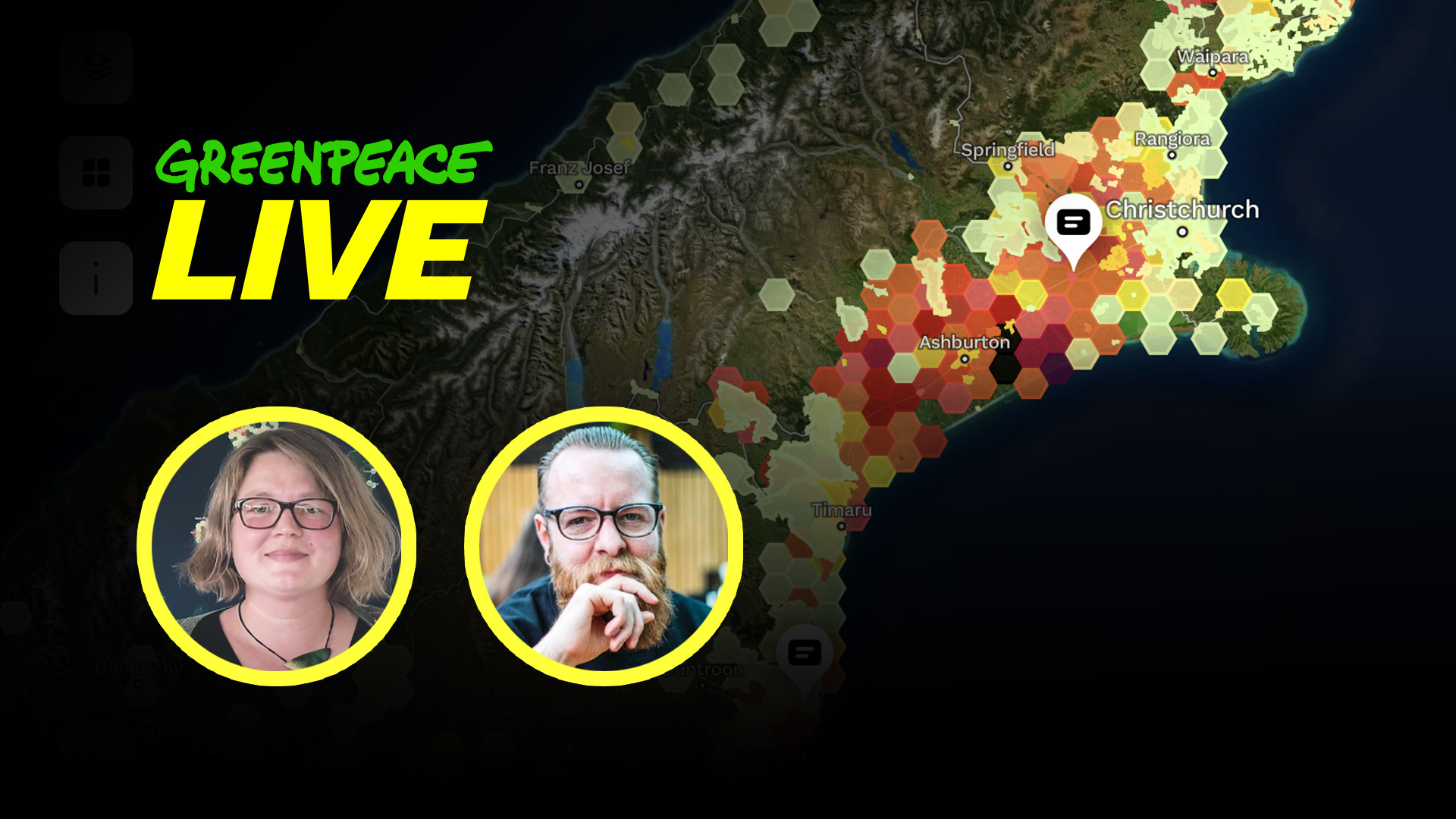
Greenpeace LIVE: Hands off the water protections
This week the Greenpeace crew discuss what can be done to turn river health around, based on the previous success of campaigns to achieve stronger freshwater protections.
-
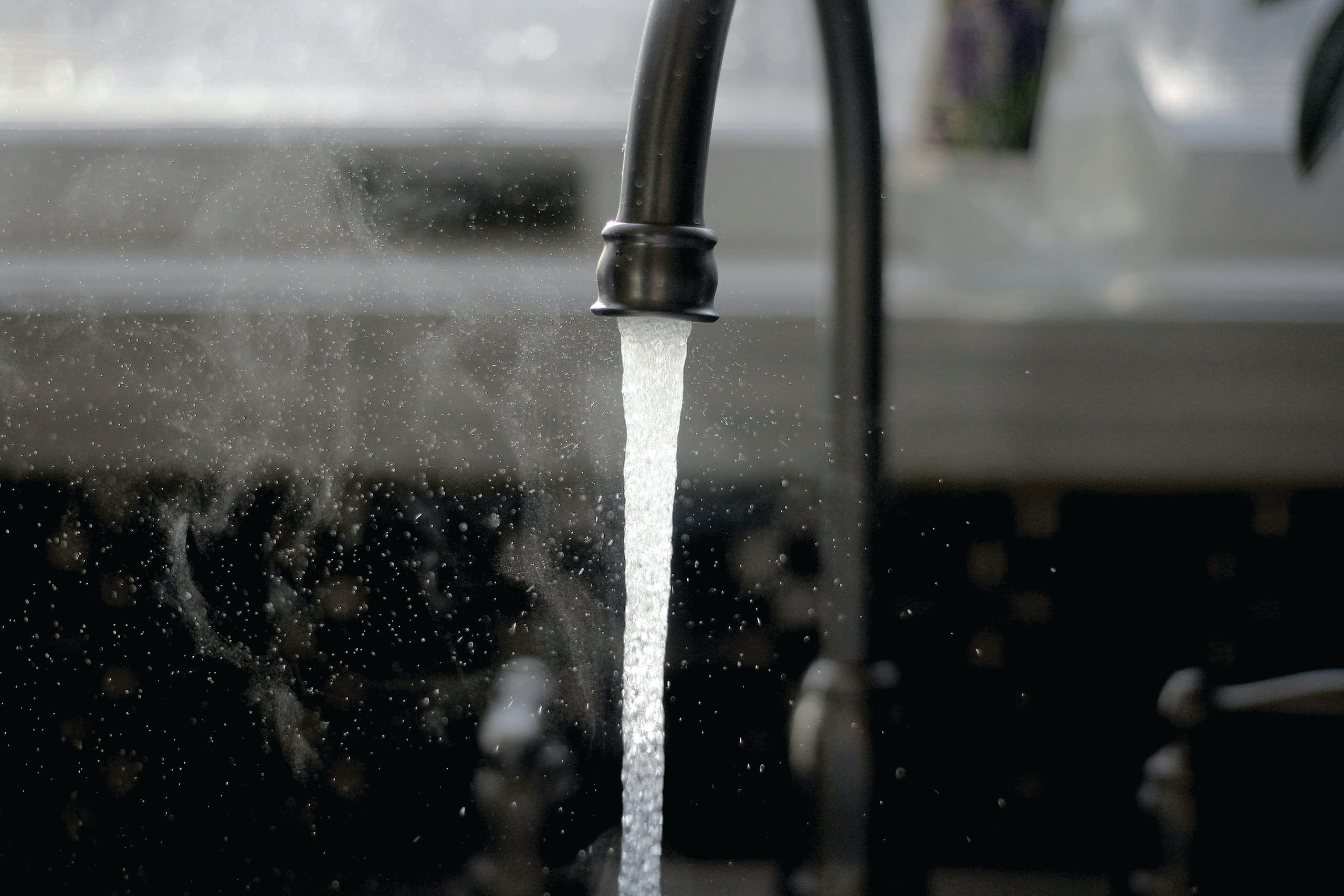
Nitrate contamination in drinking water
Everyone should be able to trust that the water from their tap is safe to drink. That’s why the rising nitrate contamination in drinking water supplies across New Zealand is…
-
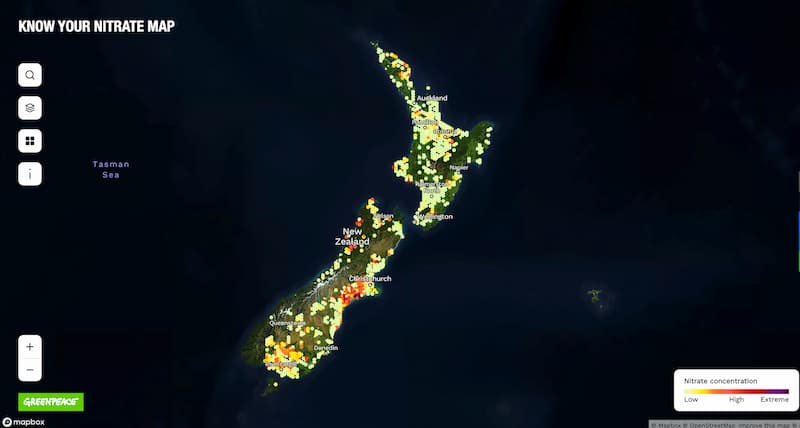
Nitrate map indicates drinking water nitrate contamination levels across New Zealand
Greenpeace has launched a groundbreaking new interactive know your nitrate map indicating nitrate contamination levels of drinking water across New Zealand, warning of health risks from the higher nitrate concentrations.
-
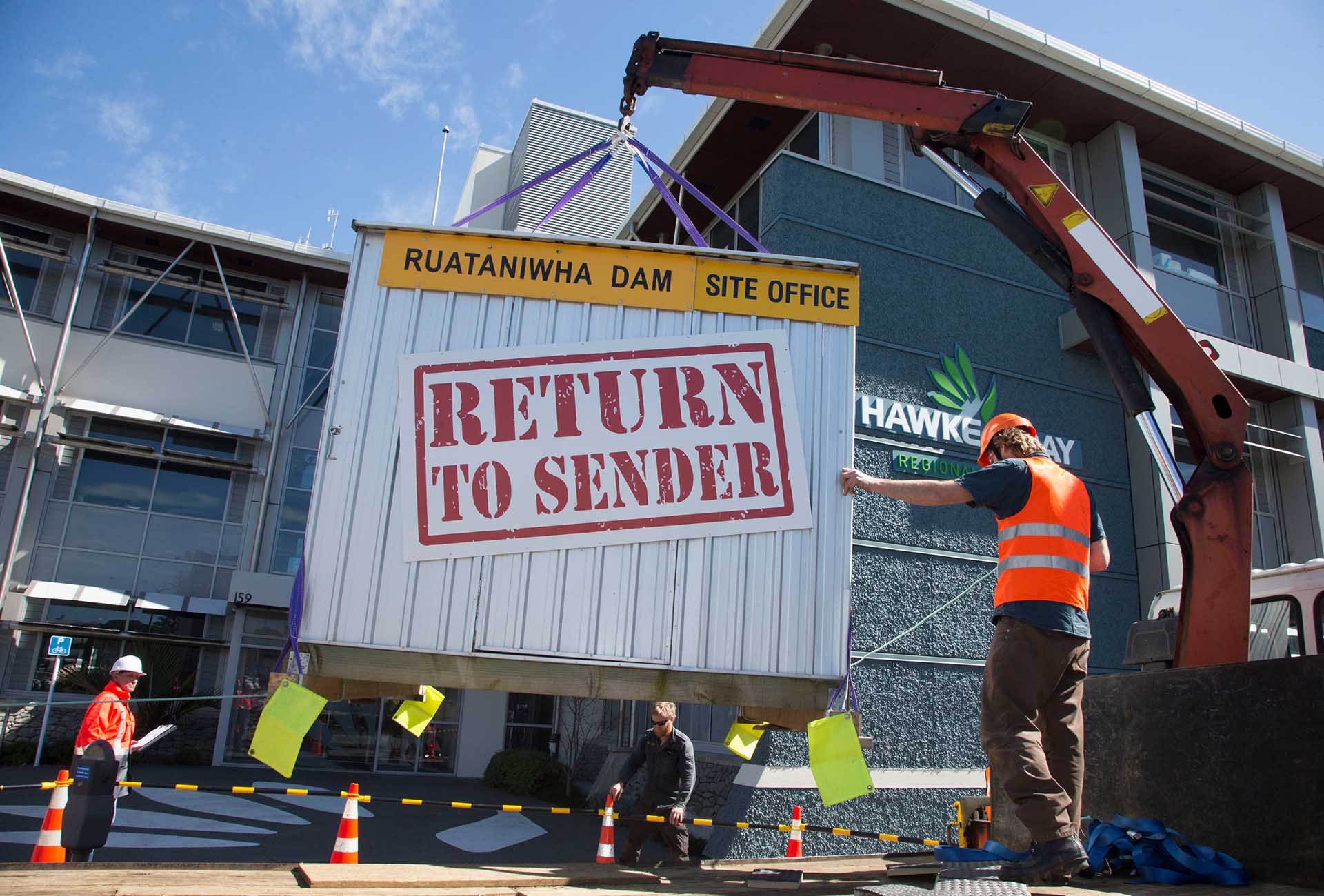
The Ruataniwha Dam: what is it, and why has it been renamed to the Tukituki Water Storage Scheme?
The Ruataniwha Dam could come back from the dead – but what is the Ruataniwha Dam, and why is it such an environmental catastrophe?
-
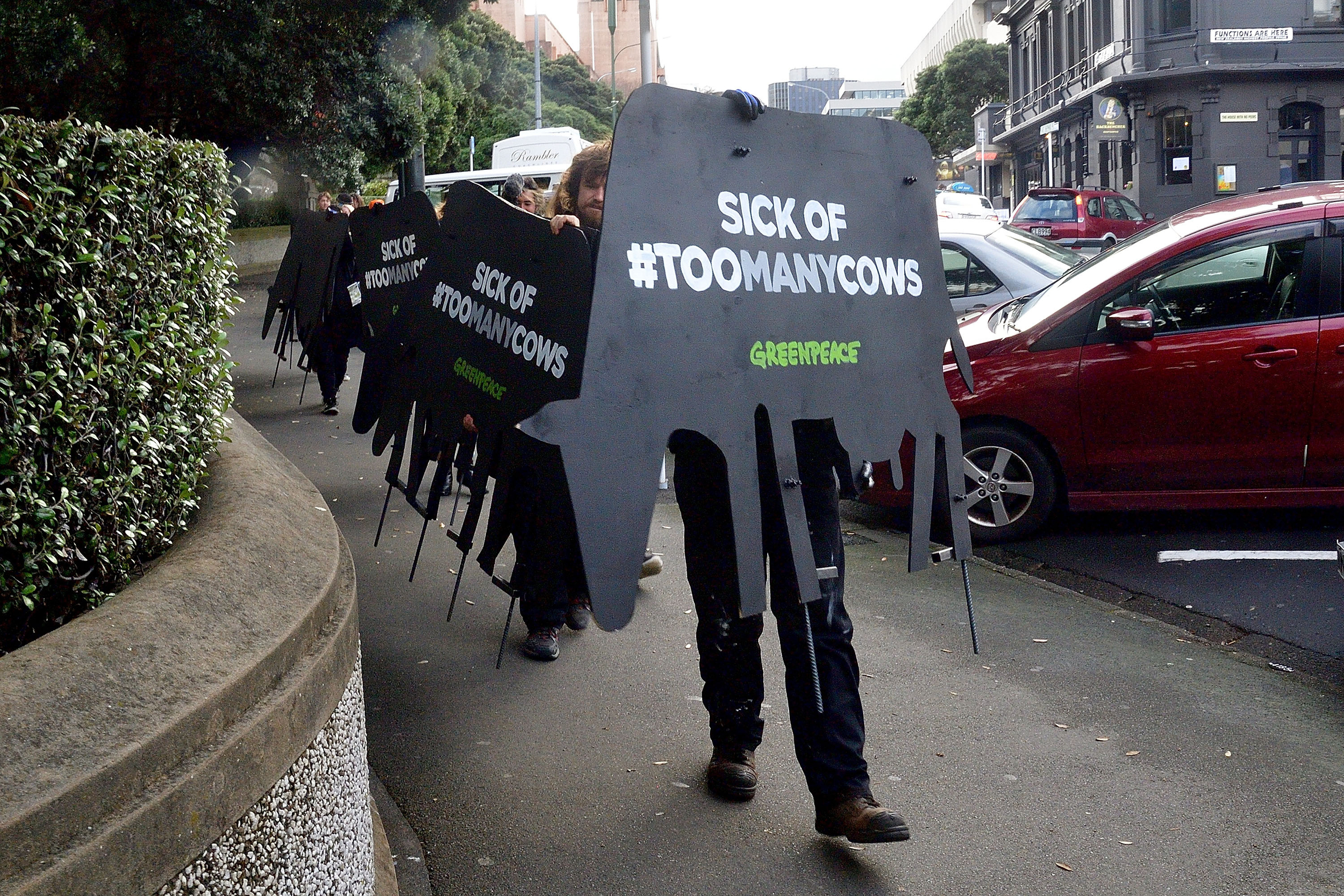
EXPERT BRIEFING: The policy bonfire of environment protection: 10 examples that threaten public health
Examined together, the new Government’s approach to environmental policy shows a clear pattern towards allowing more pollution of water, air, and climate. The implications for public health of these policy…
-
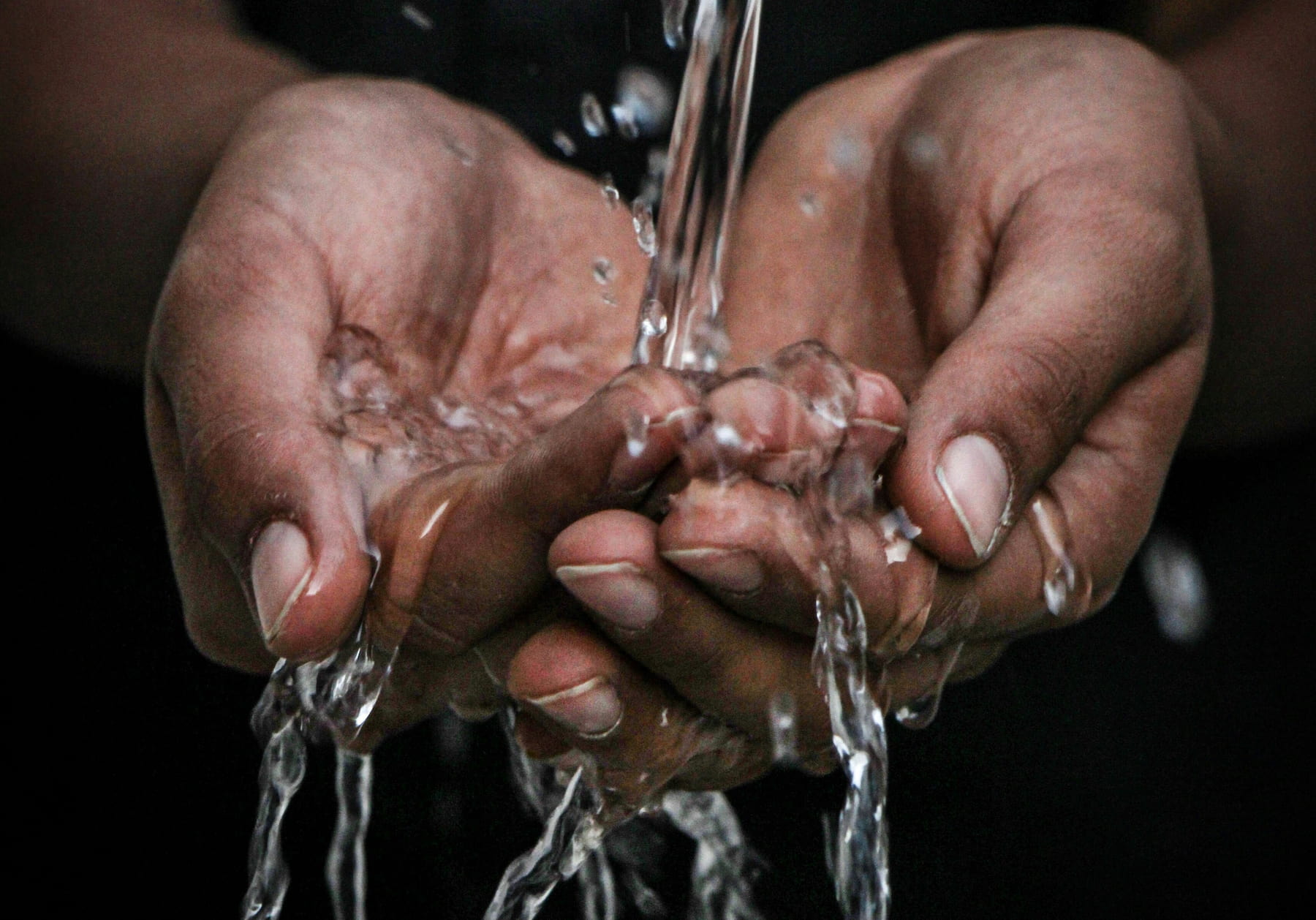
Gaps in reporting of nitrogen fertiliser use on farms leave an incomplete picture of impacts on water quality
NZ’s fresh water is under pressure but an official information request revealed that only 61% of dairy farm operators had reported their synthetic nitrogen use.
-
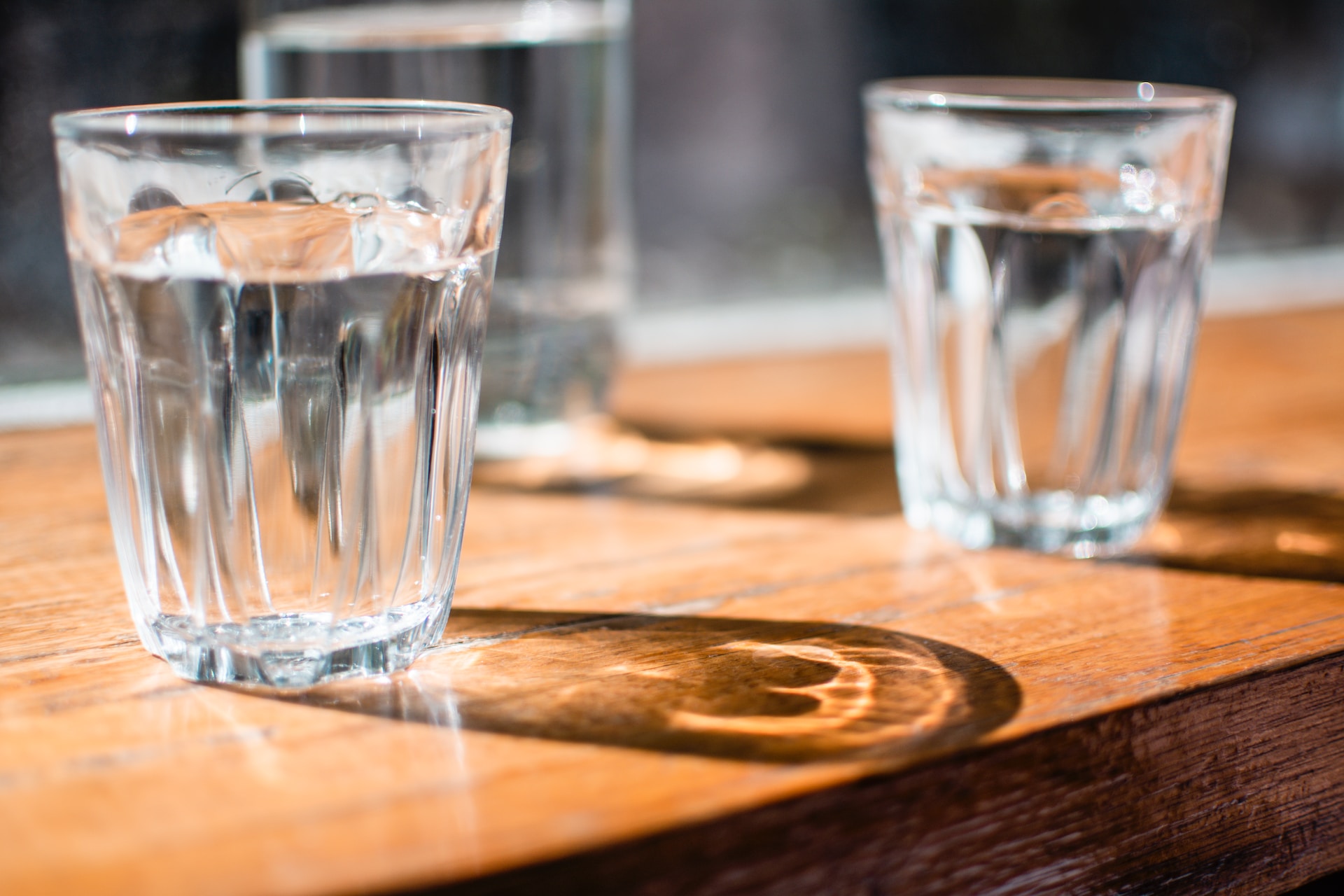
Protecting Aotearoa’s water: The fight against nitrogen pollution
Everyone should be able to trust that the water from their tap is safe to drink. But synthetic nitrogen fertiliser – and the intensive dairying it enables – is causing alarmingly high levels of nitrate contamination in our drinking water, endangering people’s health.
-
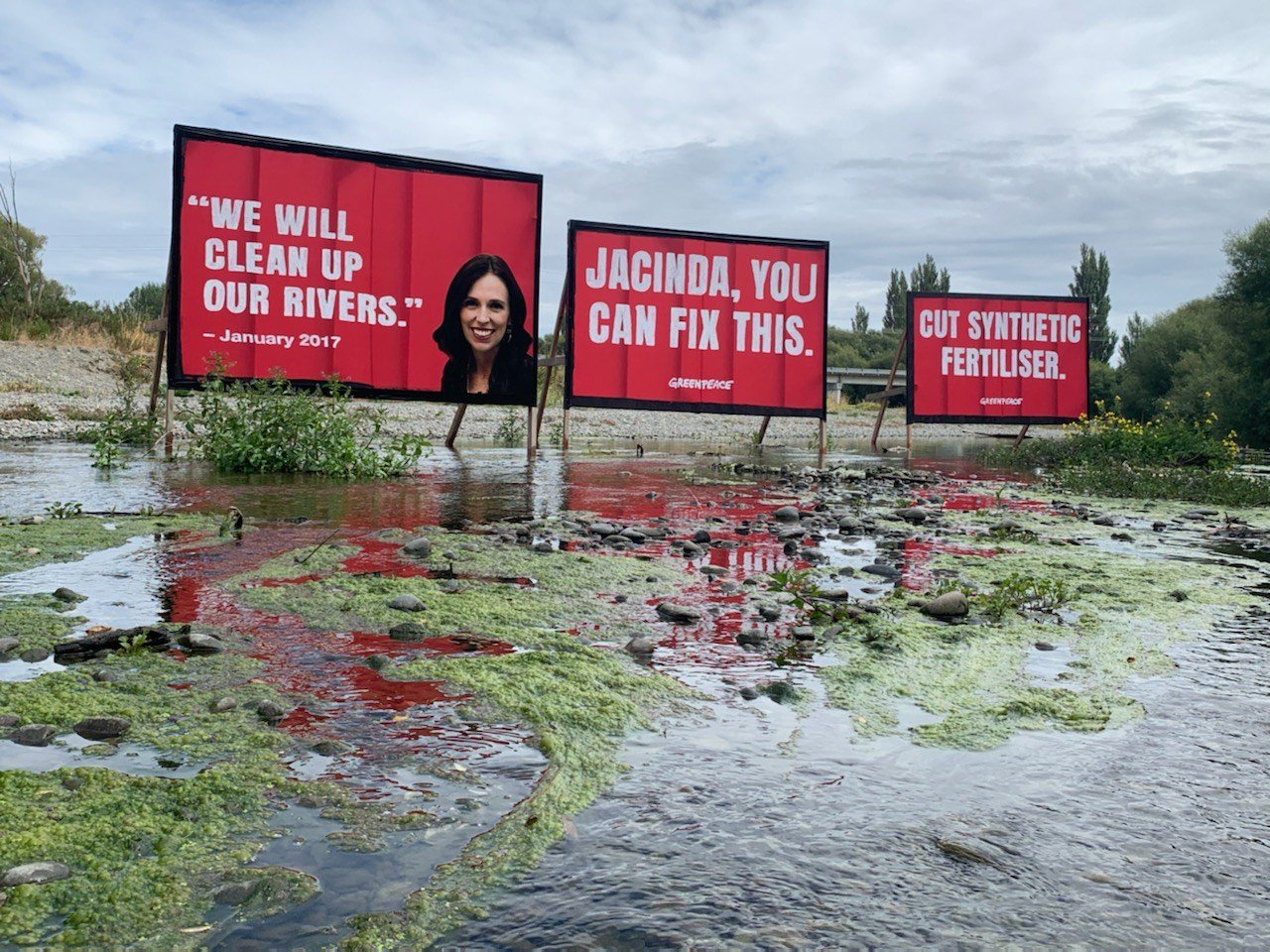
How much longer can we take our water for granted?
The first message I sent home from New Zealand was about tap water. Sounds weird. True story.
Support our work
We can have safe drinking water and healthy rivers. Support our work through a regular donation or a one-off gift.
The latest news on water pollution and Greenpeace campaign for safe fresh water
-
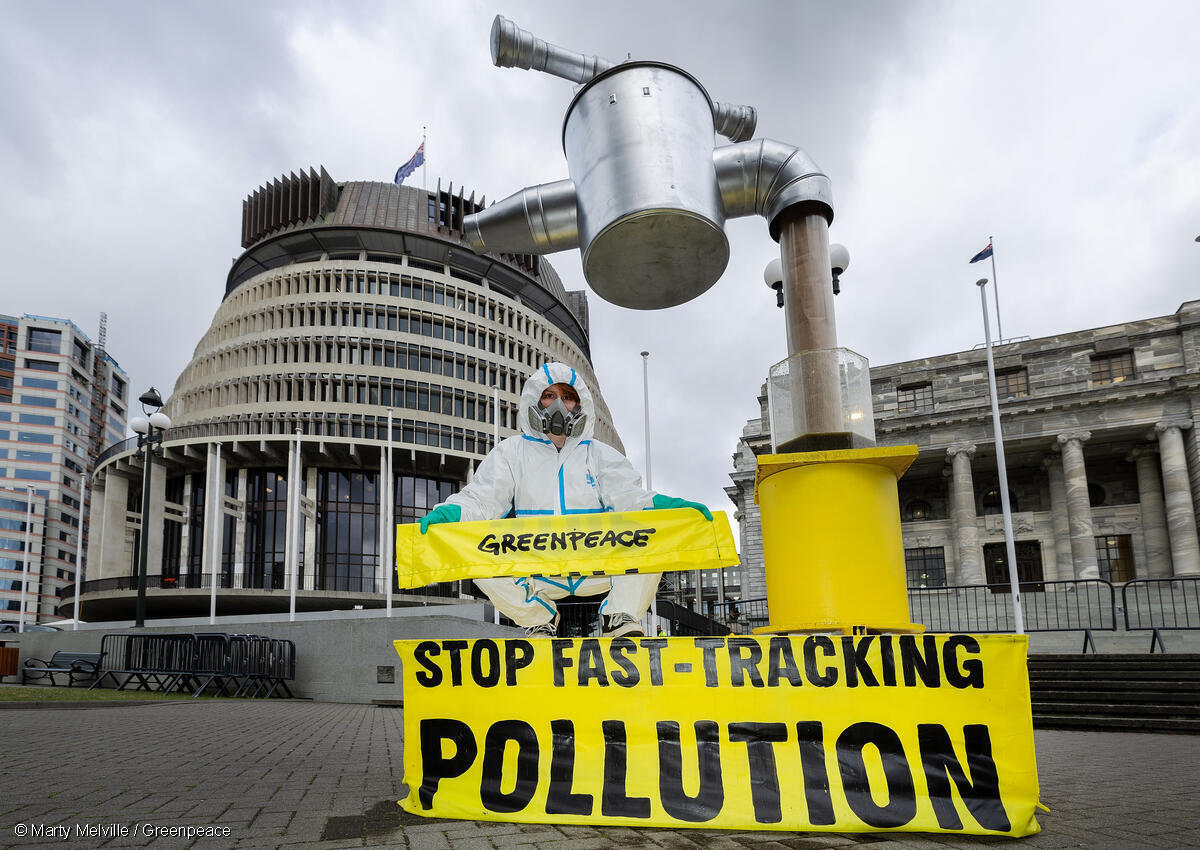
Luxon’s freshwater regulation changes are bad news – here’s why.
The Luxon Government is introducing a raft of freshwater regulation changes to make it easier for intensive dairy to pollute lakes, rivers and drinking water.
-
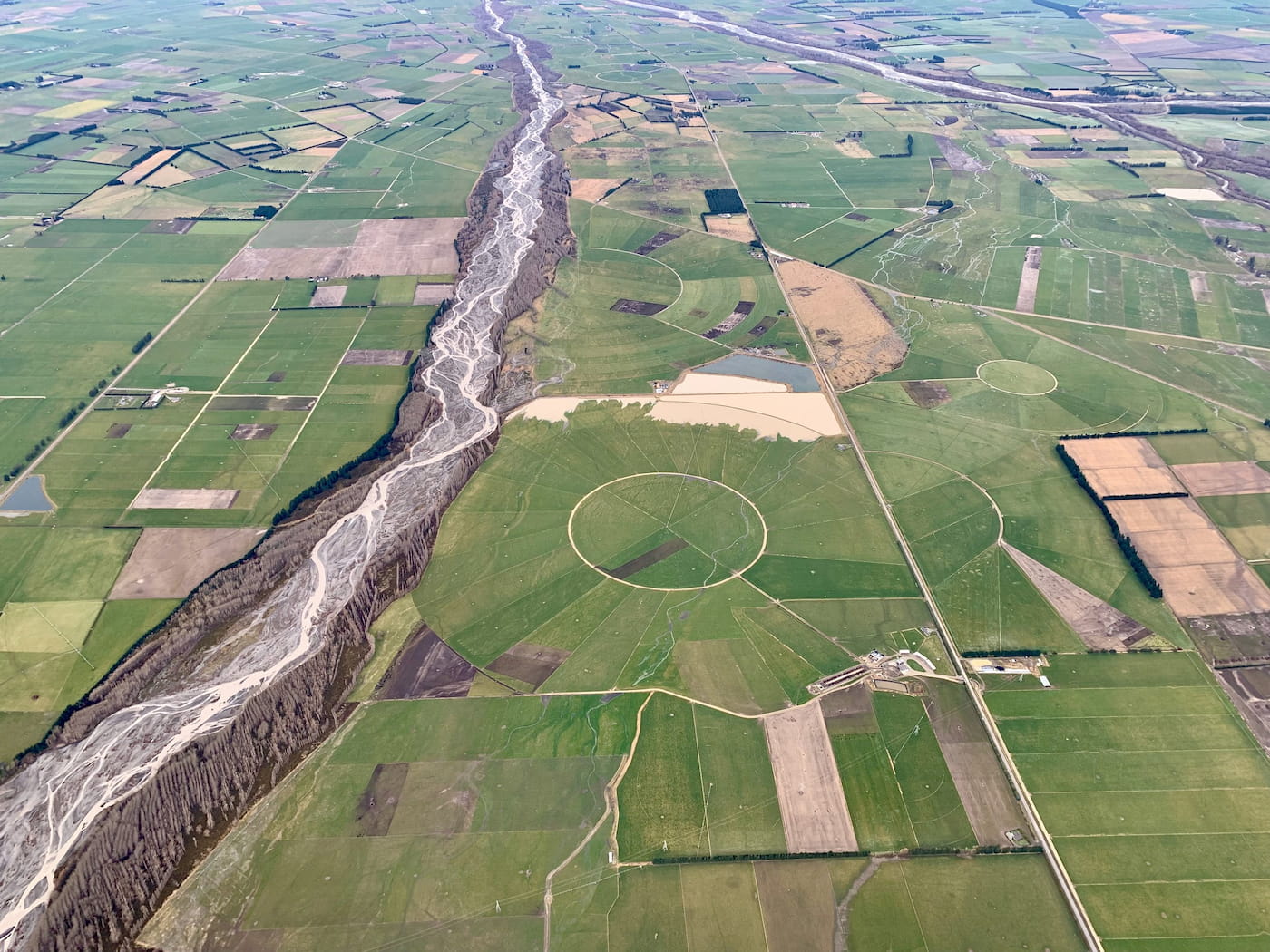
A Dirty Deal for Dirty Water – Government’s $56m irrigation subsidy blasted by Greenpeace
Greenpeace is blasting the Government’s latest $56 million irrigation subsidy, calling it a ‘dirty deal for dirty water’.
-
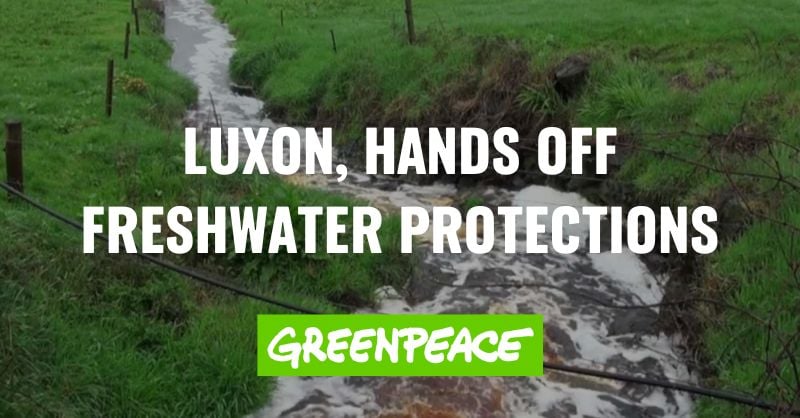
Stop Luxon’s freshwater pollution plan – submit before 27 July!
Right now, the Government is pushing ahead with plans to rewrite the rules that protect our lakes, rivers and drinking water. Their proposals would give more power to corporate polluters…
